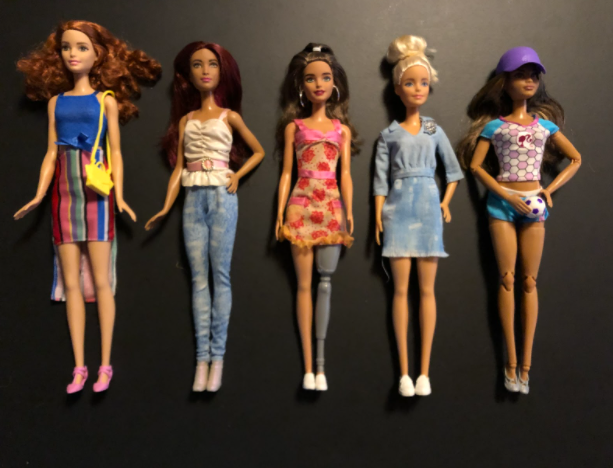Opinion: Representation is the Future of Toys
A Priceless Collection of Well Loved (and Very Diverse) Dolls
March 11, 2022
When I was two weeks away from turning 13, I went to the mall. This in itself isn’t an unusual occurrence for a 12-year-old girl, the act of shopping and, well, shopping, had become of interest to me in the past few years, as it does for most other tween girls.
But most 12-year-old girls don’t walk past the American Girl doll store and freeze, their eyes growing wide at the front display. To passerby, it looked like I was a hyper-enthusiastic shopper. For me, it looked like the release of American Girl doll’s “Diabetes Care Kit for Dolls.”
The “Diabetes Care Kit for Dolls” was released on Jan. 1, 2016 and was the first and only professional diabetic doll accessory. It came with everything a diabetic girl needed to feel like her doll was just like her, and it was evident that real research had gone into the production. Put simply, it was perfect.
Although there has been an increase in representation in dolls, American Girl doll is still the only doll company with a diabetic doll or diabetic doll kit. Before its release, I would use the American Girl Doll’s ‘Berry Wheelchair’ set. Even if my doll didn’t have my specific disability, she still wasn’t able-bodied. That was important to me.
This idea carried forward into my love of Barbies as well. Before Mattel came out with its representation dolls, I built myself a wooden wheelchair out of old scraps of wood I found.
Once Mattel upgraded its representation, I made a point to diversify my dolls as much as possible. My favorites were an African American doll with long pink hair, whom I named Scarlett. Scarlett went on to join the military (which, in being diabetic, I couldn’t do). Emory, a Latina doll with a bionic leg much like my aunt’s, and Grace, a curvy blonde doll who at least resembled me as much as a plastic doll could.
My neighbor found my obsession with “different” dolls to be a little strange. She preferred the skinny blonde Barbies that Mattel had made for years, a picture of the ideal body and looks that every 13-year-old dreams of having. And still, on many days, I catch myself wishing that my thighs and waist were Barbie sized, and that my stomach were plush enough that it wouldn’t hurt to pierce my skin with sterilized syringes.
On those days, I remember the pure joy that ran through my veins in that dingy mall five years ago. I remember how I valued each plastic toy so much, not for the plastic, but for the people it represented. And so to each individual who counters the importance of diversity in toys, I say only this: We work to make our dolls look like our people. Not the other way around.








